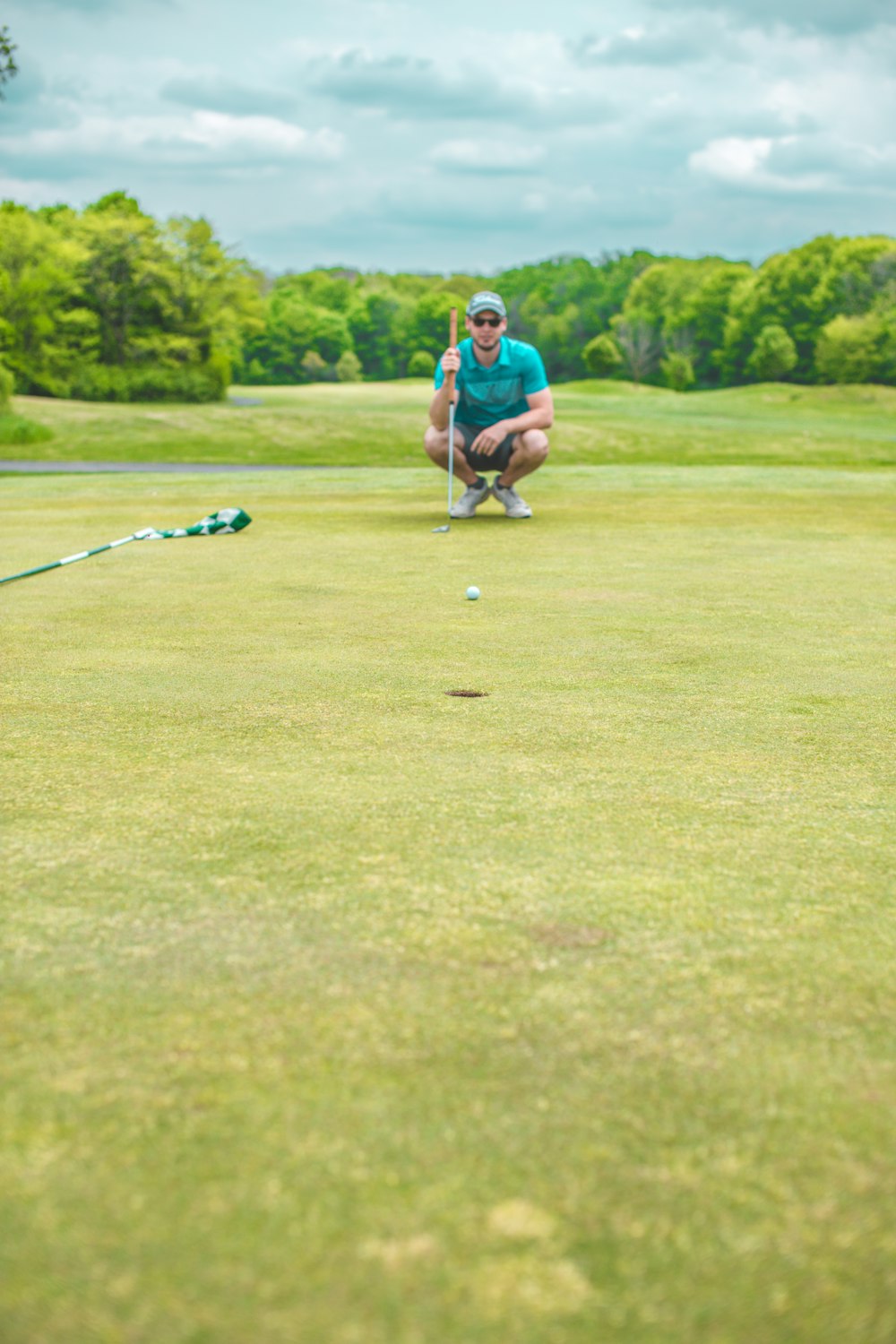
What is a tight lie in golf? When a golfer’s ball is in an area with little grass beneath it, they may come across tight lies. A tight lie might result in a tiny, sparse lawn or bare ground. A “tight lie” is one in which the ground beneath the ball is solid and compact.
Tight lines are also known as thin lies. In the absence of grass, bare lies, or hardpan lies.
The most popular sites on a golf course to encounter tight lies are:
- Golf courses have become completely parched as a result of a dry summer.
- In the midst of rough terrain.
- Courses with little or no watering other than rain.
- Where turfgrass is dormant during the winter months on golf courses.
- And in areas that have been closely mowed around green surrounds.
The opposite of a “tight lie” is a “fluffy lie.” A fluffy lie is usually regarded as good, but it can lead golfers to swing their clubs above the sweet spot, affecting the distance of their shots.
What Is A Tight Lie In Golf?

What is a tight lie in golf? When a golfer’s ball is in an area with little grass beneath it, they may come across tight lies. A tight lie is a golf term for placing a ball close to the ground. The ball is placed on a solid surface with little grass to allow distance between the ball and the ground.
A tight lie might be detrimental to a golfer’s swing since the ball is closer to the ground than usual. Tighter lies are more prevalent in the winter months on courses. A “bare lie” is another name for a tight lie.
Why Tight Lies Gives a Hard Time For Higher-Handicappers?

A tight lie may be frightening for lower handicappers, in particular. Many golfers, and particularly higher-handicappers, have more confidence over shots when the golf ball is “sitting up” on a lush carpet of grass. Beginners and higher-handicappers are more confident teeing off than ground stroking. Higher-handicappers have a more challenging time getting the ball up into the air, as their confidence in doing so goes up when the golf ball is “sitting up.”
A tight lie can make a golfer worry about getting the club beneath the golf ball, which might lead to an aversion to hitting thin shots.
The golfer may also avoid thin shots by attempting to “help the ball” into the air rather than hitting down on it, as this behavior is known. And it’s a surefire way to thin or blade one’s golf shot. Fearing a thin shot might cause the ball to chunk.
How To Customize A Tight Lie?
The following tips will assist you in learning to hit from a tight lie. Swing with greater power into the downswing and lean back more on the front foot by generally returning the ball in your stance. Maintain a constant pace while practicing these techniques.
Make the following changes to guarantee that your iron hits the ball before it does. Just bear in mind that the ball will roll somewhat lower than usual because of the modifications. However, to hit a shot of equal length, you may need to use a more lofted club.
Use your putter or even a hybrid club to make the shot if you’re in a bind around the green. Rolling the ball up to the putting surface rather than chipping or pitching, in some situations, eliminates your dread of chunking it or flying over the green.
You may find numerous videos of golf instructors offering instruction on playing from various sorts of tight lies if you perform a simple YouTube search.
Tackling Tight Lies
You’re not alone if you’re having trouble with the bit of stuff! Consequently, shots from tight lies cause golfers of all skill levels, including those on the PGA and LPGA Tours, to struggle. These are challenging shots with a narrow margin of error.
There are two perfect shots (or swings) from a tight lie:
1. A high-loft, low-bounce wedge can be used to kiss the turf.
2. With a low-loft club, you can pick the ball in a sweeping, bump-and-run motion.
The High-Loft
The difficulty with a wedge shot from a tight lie is that you must ensure that the bottom of your swing arc is positioned correctly so that your club brushes the dirt immediately after impact.
To make this work, you’ll need a wedge with only a slight bounce on the sole (less than 10 degrees) and that you keep in an open posture at address and through impact. This will keep the club’s leading edge from digging into the ground. Even though it’s a very effective shot, there’s an alternate method.
The Low-Loft
The tight-lie technique is ideal for shots without a carry-over, a danger, or an obstacle. When you want the ball to stay low and run to the pin, this is the way to go.
The objective is to make solid contact on the shot without disturbing the grass beneath it, which requires a well-leveled golf swing, and the ball positioned just within your swing arc. The key is to select the ball without disrupting the turf underneath it.
To begin, apply only a little pressure to a low-loft club. This effectively raises the bottom of your swing arc. At address, place your hands in front of the ball with your arms parallel to each other. Then make a typical backswing and through while keeping it as level as possible.
Taking a tight lie requires excellent control over distance, but it can be mastered with some practice. Although taking tight lies is never simple, both of these distinct approaches may help you discover short-game riches for yourself.
Factor Affecting The Tight Lie In The Golf

Following are the factor affecting the tight lie in golf:
1. Below The Ball’s Surface
The surface beneath the ball is an essential element to consider when determining a shot’s lie.
A golfer, for example, would play a shot differently if the ball was on sand than if it were on closely mown grass on the fairway.
A golfer may be delighted when their ball lands in the middle of the fairway, but they may be less so when it’s discovered that their ball has become entrapped within a divot.
2. Obstacles In The Path Of The Ball
Another thing to consider is whether the target’s line of sight is restricted. A golfer may become discouraged if a massive tree in ideal circumstances blocks the ball’s route to the target.
3. Resistance To The Swing
There must be no restrictions on a golfer’s ability to swing freely to have a great lie in the game. A low-hanging limb blocking the path of a backswing or follow-through will quickly ruin an otherwise excellent lie.
4. The Ball’s Place In Relation To Your Feet
A teeing ground is a good place for placing a golf ball, providing a level and flat surface. The golfer’s feet should also be on the same flat surface as the ball to ensure that they are all of the equal height.
If any of the preceding three components is off, the shot will be more difficult to execute.
Articles You Might Enjoy Reading






